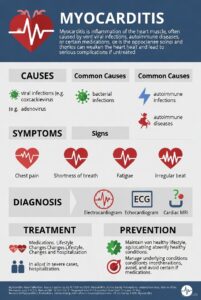- Complications
- Pseudocyst
- Fluid, enzyme, debris, and exudates surrounded by wall
- Abdominal pain, palpable mass, nausea/vomiting, anorexia
- Detected with imaging
- Resolves spontaneously or may perforate and cause peritonitis
- Surgical or endoscopic drainage
- Pancreatic abscess
- Infected pseudocyst
- Results from extensive necrosis
- May rupture or perforate
- Upper abdominal pain, mass, high fever, leukocytosis
- Requires prompt surgical drainage
- Systemic complications
- The pulmonary complications are likely due to the passage of exudate containing pancreatic enzymes from the peritoneal cavity through transdiaphragmatic lymph channels
- Pleural effusion
- Atelectasis
- Pneumonia
- ARDS (acute respiratory distress syndrome)
- Hypotension
- Thrombi, pulmonary embolism, DIC
- Hypocalcemia: tetany
- Due in part to the combining of calcium and fatty acids during fat necrosis.
- The exact mechanisms of how or why hypocalcemia occurs are not well understood
- The pulmonary complications are likely due to the passage of exudate containing pancreatic enzymes from the peritoneal cavity through transdiaphragmatic lymph channels
- Pseudocyst
- Diagnostic studies
- Laboratory tests
- Serum amylase level
- Usually elevated early and remains elevated for 24 to 72 hours.
- Serum lipase level
- Also elevated in acute pancreatitis
- Is an important test because other disorders (e.g., mumps, cerebral trauma, renal transplantation) may increase serum amylase levels
- Liver enzyme levels
- Triglyceride levels
- Glucose level
- Bilirubin level
- Serum calcium level
- Serum amylase level
- Abdominal ultrasonography
- X-ray
- Contrast-enhanced CT scan
- Identify pancreatic problems
- Endoscopic retrograde cholangiopancreatography (ERCP)
- Endoscopic ultrasonography (EUS)
- Magnetic resonance cholangiopancreatography (MRCP)
- Angiography
- Chest x-ray
- May show pulmonary changes, including atelectasis and pleural effusions
- Laboratory tests

What Is Myocarditis
Email Print Español IN THIS ARTICLE What is Myocarditis? Causes and Risk Factors Symptoms Diagnosis Treatment Myocarditis and COVID-19 What is Myocarditis? Causes and Risk



